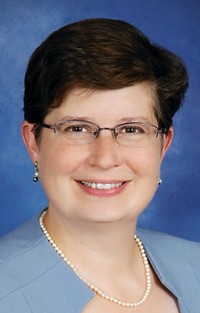Advertisement
Grab your lab coat. Let's get started
Welcome!
Welcome!
Create an account below to get 6 C&EN articles per month, receive newsletters and more - all free.
It seems this is your first time logging in online. Please enter the following information to continue.
As an ACS member you automatically get access to this site. All we need is few more details to create your reading experience.
Not you? Sign in with a different account.
Not you? Sign in with a different account.
ERROR 1
ERROR 1
ERROR 2
ERROR 2
ERROR 2
ERROR 2
ERROR 2
Password and Confirm password must match.
If you have an ACS member number, please enter it here so we can link this account to your membership. (optional)
ERROR 2
ACS values your privacy. By submitting your information, you are gaining access to C&EN and subscribing to our weekly newsletter. We use the information you provide to make your reading experience better, and we will never sell your data to third party members.
Comment
Comment: Our environment needs you
by Elise Fox, chair, ACS Committee on Environment and Sustainability
June 23, 2023
| A version of this story appeared in
Volume 101, Issue 20

The Committee on Environment and Sustainability (CES), previously known as the Committee on Environmental Improvement, was established in 1968. Lots was going on in the environmental space in that decade. In 1962, Rachel Carson published Silent Spring, a book that was instrumental in raising the public’s awareness of the impact that human activities have on the environment and the need to properly protect communities via environmental regulation. In 1969, an oil slick on the Cuyahoga River, in Ohio, caught fire for the 13th time, which started the modern environmental movement. The US Environmental Protection Agency was created soon after.
On the first official Earth Day, April 22, 1970, Cleveland had one of the biggest turnouts in the country, and more than 1,000 students marched to the Cuyahoga river in protest of its condition. An estimated 20 million people nationwide participated in activities on that first Earth Day. Now the largest secular event in the world, Earth Day is celebrated by an estimated 1 billion people in more than 190 countries.
The US Clean Air Act, passed in 1970, has served as the basis for sweeping successes in restoring the quality of the air we breathe and in improving the health of communities. It was instrumental in getting lead removed from gasoline, which has been correlated to developmental improvement in children and decreased risk of heart disease and stroke. I am old enough to remember the acid rain in the western US in the 1980s and the hole in the ozone layer. My parents can clearly describe the soot and air pollution in Pittsburgh in the 1960s. Currently, the protections we have grown accustomed to are under attack.
A sister to the Clean Air Act, the Clean Water Act, preserves access to and the enjoyment of, pollution-free waterways. Before the act, passed in 1972, it was common for raw sewage to be dumped into rivers and streams; over half of wetlands were lost. In 1967, not a single fish could be found in the Cuyahoga River between Cleveland and Akron, Ohio. Today, the same river boasts over 70 species of fish that are safe for human consumption. Likewise, the now-thriving Potomac River was once so polluted as it flowed through Washington, DC, that anyone who fell into it was encouraged to get a tetanus shot. These waterway protections are now under threat.
Threats to the EPA’s ability to take action against emissions in our air and pollution in our water are also impacting its ability to address the most crucial environmental issue of our time: climate change. Climate change is already affecting our lives. From the increased occurrence and intensity of extreme weather events to the loss of biodiversity to the shifting migration patterns of animals to the loss of sea ice to the acidification of our oceans, evidence suggests we are not acting aggressively enough to limit warming to 1.5 °C. And recent reports suggest we could reach that ceiling as early as 2027.
In its 55 years of existence, CES has helped the American Chemical Society advocate for environment, green chemistry, and sustainability initiatives. The critical work the committee does includes writing policy statements on behalf of ACS on topics such as climate change, water, energy, and sustainability in the chemical enterprise. Once approved by the ACS Board of Directors, those policy statements become the basis of ACS’s lobbying and advocacy efforts in DC.
CES members are also personally devoted to leaving the world a bit better than we found it. We continually seek ways to apply our professional knowledge to directly and positively affect the communities where we live, work, and play. Our committee’s vision is “chemistry for a sustainable world.” This remit encompasses every part of members’ lives and extends into every community we touch.
It’s time for everyone to take similar action. We must all demand the development—and meaningful enforcement—of environmental regulations to ensure that everyone has access to clean air and water, and that we have the ability to address climate change. Everyone, regardless of their race, ethnicity, socioeconomic status, or location must be able to live in places that do not adversely affect health or well-being. Unequal enforcement of environmental protection regulations negatively impacts all of us: air and water are not stagnant and neither are the pollutants within them. We need to do more to protect the environment for today and for future generations. We can wait no longer.
Views expressed are those of the author and not necessarily those of C&EN or ACS.




Join the conversation
Contact the reporter
Submit a Letter to the Editor for publication
Engage with us on Twitter